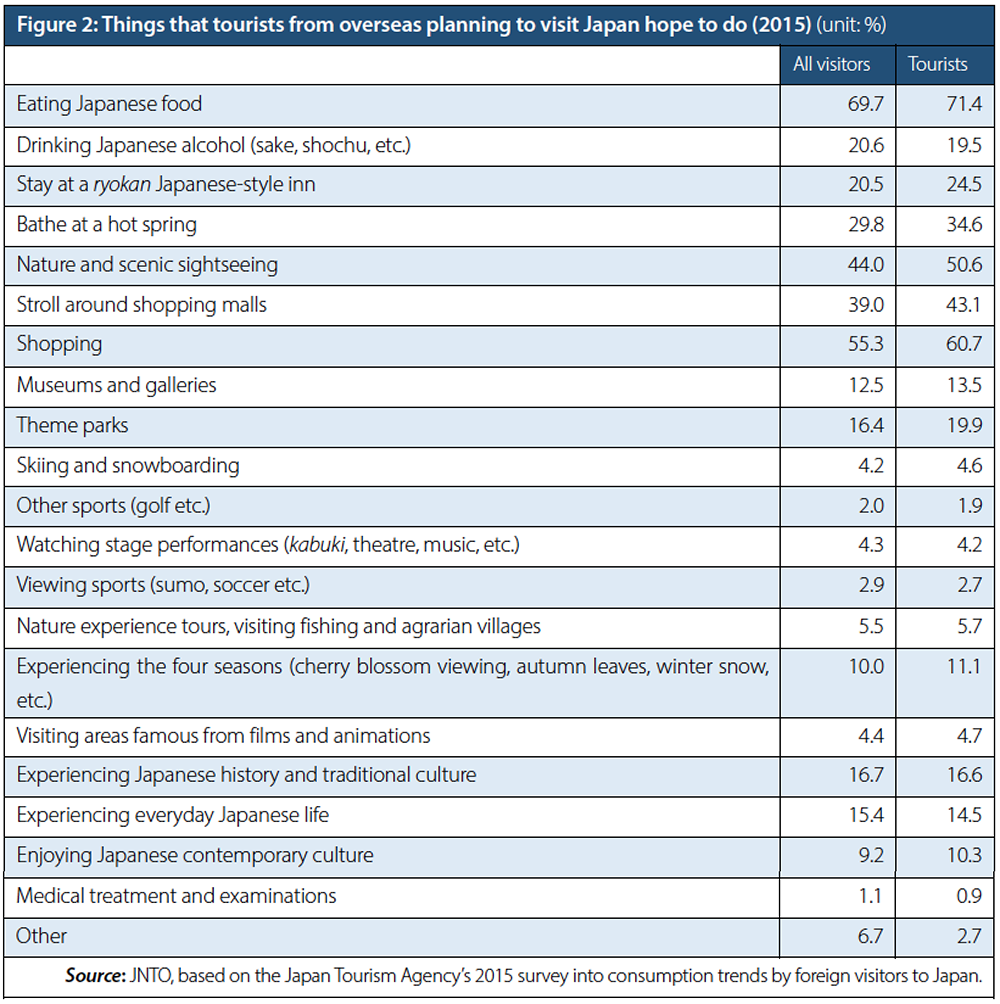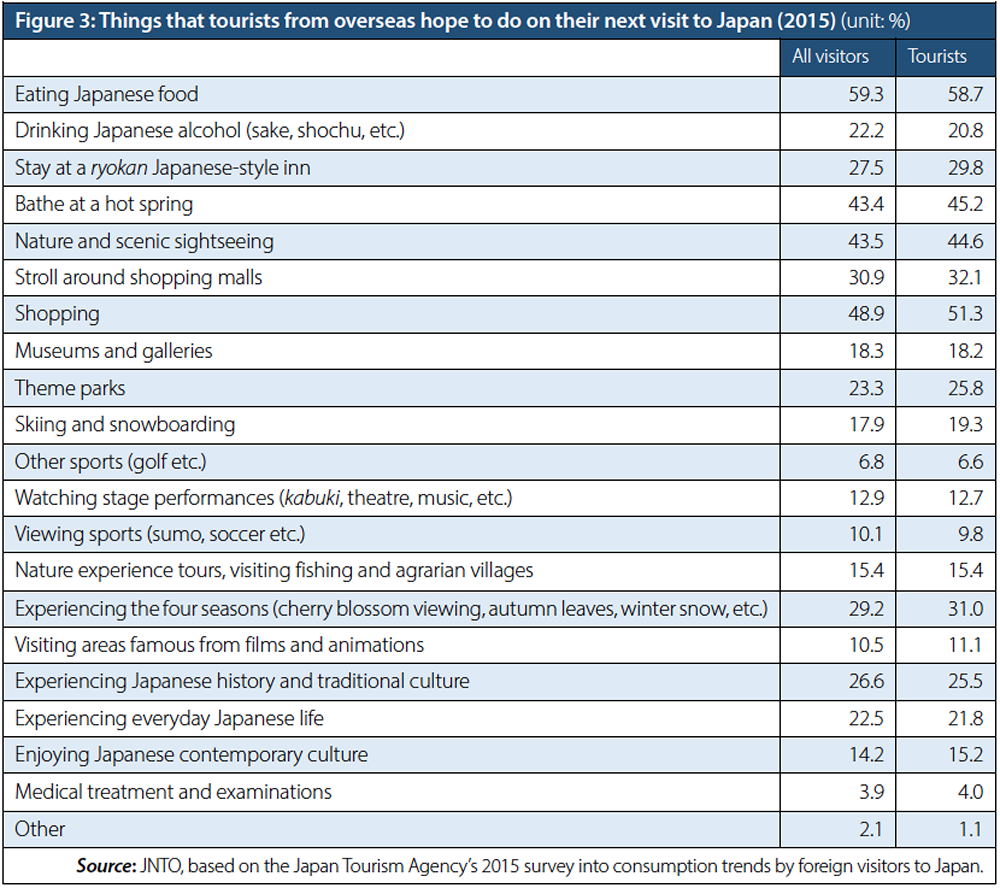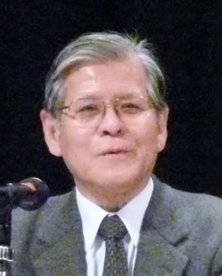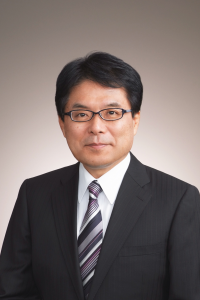What Impresses Foreign Tourists When They Come to Japan? ― Explaining Japanese society and culture to foreign tourists

Photo: Courtesy of the Japan Guide Association
As an tour guide-interpreter, Hagimura Masayo sometimes spends as long as two weeks traveling around the whole of Japan with foreign visitors, so no-one has more first-hand knowledge of exactly what interests, attracts and impresses tourists. In this article, she taps her rich professional experience to discuss some tourism resources of which Japanese people might not be aware.
Introduction

Hagimura Masayo, President, the Japan Guide Association
When the Japanese government launched its Visit Japan campaign back in 2003, the number of foreign tourists visiting Japan each year was only 5.24 million. Ten years later the figure had reached 10 million, and over time it gradually increased. From January to October 2016, more than 20 million people visited Japan. (The exact figure was a record 20,113,000 people, compared to 16,316,000 for the same period in 2015).
As this happens, the amount of work we tour guide-interpreters are asked to do is growing. Although there are differences between those working in different regions, and with different languages, overall we can expect demand to increase in the run-up to the 2020 Olympics and Paralympics.
Meanwhile, internet review sites are becoming more popular, more tourists are making repeat visits to Japan, and the types of tours available to inbound tourists are becoming more diverse. Tourists also require better-quality tour contents, and better and more skilled tour guide-interpreters.
We tour guide-interpreters work more closely with foreign visitors to Japan than anyone else. In this article, I’d like to tap that perspective to ask; what impresses foreign tourists; and what are Japan’s tourism resources when it comes to foreigners?
What is a tour guide-interpreter?
Have you ever seen someone carrying a small flag and guiding foreigners through a sightseeing spot saying, “This way, please!”? This is the job of Japan’s National Licensed Guides. As we are often called tour guide-interpreters, there’s a tendency to assume that we work as interpreters, but there two main differences.
Firstly: the job of an interpreter is to translate the words of a speaker into a different language. They are not permitted to add to or subtract from that content. There is no national qualification for interpreters.
Secondly: tour guide-interpreters serve as guides while speaking a foreign language. A national qualification is necessary.
In addition, tour guide-interpreters fulfil the following three main functions through their work:
1) Acting as a guide for tourists.
2) Acting as a tour-conductor, i.e. managing itineraries and handling attraction and transport tickets.
3) Interpreting (including assistance with foreign language related issues)
Tour guide-interpreters do not just give sight-seeing explanations in a foreign language, they also do the same job as the tour conductors that accompany Japanese group tours, and they do both by themselves. Also, they work right across Japan from Hokkaido to Okinawa.
Although their main functions are 1 and 2 above, in the case of corporate inspection tours or Meetings, Incentives, Conventions, and Events (MICE) etc. they often also interpret. Even during sightseeing tours, there are often occasions when they interpret, say for maiko trainee geisha (See photos 1, 2, and 3).
| ① | ② | ③ |
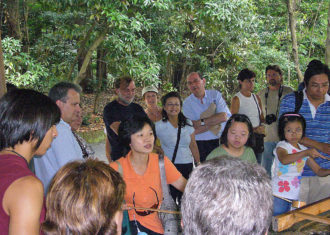 |
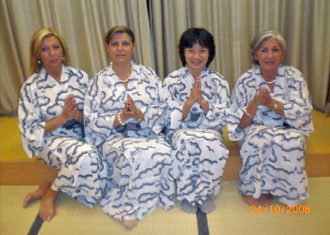 |
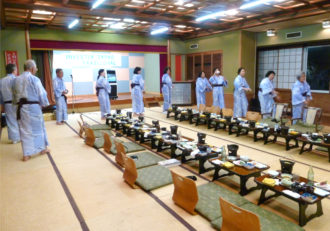 |
| Photos: Courtesy of the Japan Guide Association | ||
From face-masks to short-handled brooms: questions from foreign visitors
But when foreign visitors take tours in Japan, what are they interested in, and what sort of questions do they usually ask? The below are examples of some common questions posed to tour guide-interpreters, and just a few of the unexpected questions we get. Some even have the professionals scratching their heads!
1) (Pointing at a Japanese person) Why is that person wearing a mask?
2) (To the tour guide-interpreter) What’s your religion? Note: this would be an unthinkable question for one Japanese person living in Japan to ask another.
3) Why don’t Japanese people kiss when they greet each other?
4) Where can I meet a geisha? Note: some foreigners tend to assume that all Japanese women wearing kimono are geisha. Others think that geisha are prostitutes; perhaps from novels they have read.
5) Why do Japanese people use brooms with short handles?
6) How on earth does one eat white rice with chopsticks?
7) Who in the world cleans those 50cm gaps between buildings? Why don’t they just join the buildings together?
8) Why do young Japanese women walk with their toes turned inwards? Note: foreigners are very intrigued by this.
9) Why don’t restaurants use paper napkins? Note: visitors are at a complete loss as to what to do without a paper napkin.
10) Why do Japanese people take off their shoes?
11) The Japanese manji symbol of temples looks like a German swastika. Are they connected?
12) Why are there so many overhead cables in Japan? Wouldn’t the view be improved without them?
13) What should one do if an earthquake occurs?
The most common question is number one, about masks. Visitors from Europe and America in particular see masks as something worn by those with infectious disease. This is often the first question they think to ask when they come to Japan.
Regarding question number 12), I once jokingly answered that Japan has a lot of crows and pigeons, and they need somewhere to rest. After that I checked with an architect relative so that I had an answer.
Number 13 is a question that people often ask after they arrive in Japan. For people who live in countries without earthquakes, it is a serious question.
Finding tourism resources in surprising Japanese realities and customs
But when foreign tourists come to Japan, what is it in particular that interests them? There are differences depending on country, generation, and gender, but the below are typical examples of what surprises and impresses foreign tourists, according to my own experience. These unassuming things and objects, both tangible and intangible, are tourism resources that can surprise and impress visitors.
1) That elementary school children themselves clean their school each day, and that cleaners aren’t employed. Foreigners think they could learn from this part of our education system.
2) That white rice doesn’t taste of anything. Why eat something with no taste?
3) That most narrow streets and roads don’t have names. How is the mail delivered?
4) Tourists are impressed by high-tech Japanese toilets. Some want to buy them to take home.
5) That there is no custom of tipping in Japan.
6) That elementary school children travel to school by themselves without their parents or guardians. Isn’t it dangerous?
7) That Japan has no “ladies first” tradition; that, in fact, men traditionally come first.
8) That different products don’t differ in price greatly depending on the region of Japan.
9) The recycling is so advanced, and that household garbage must be carefully separated into different materials.
10) That even in high-tech Japan many areas do not have free Wi-Fi, and that its availability is limited.
11) That the Japanese language uses two types of phonetic alphabet (kana) alongside more than 2,000 ideographs, and that these are used daily in combination. What are the inside of Japanese people’s heads like? (They must be superhuman).
12) That Japanese people are always bowing, even on the telephone.
13) That Japanese people slurp as they consume soup or noodles. This is an unpleasant noise to people from Europe or America.
14) That there are so many groups of children on school trips and post-graduation trips. That their behavior and manners are so good.
15) That wives look after the household finances in Japan, not husbands.
16) That so many people commit suicide. They are incredibly surprised that almost 30,000 people kill themselves in Japan each year.
17) That Japan still has the death penalty. (I am often asked how they are killed, but I reply that as a Japanese person I have not considered that question.)
18) That wedding ceremonies are so quiet that people seem sad during what ought to be a happy occasion.
19) That Japanese people eat horse meat. In particular, foreign tourists can’t believe it is eaten raw.
Foreign visitors are immediately impressed at the lack of garbage at the road sides. It is simply amazing to them, but I’ve rarely just been asked, “Why isn’t there any litter?” On the other hand, they often ask, “Why aren’t there any garbage pails?” “Where do Japanese people throw away their trash?” or “There aren’t any garbage pails, so why isn’t there any litter?” When I reply that in Singapore there are fines for dropping litter but in Japan generally that’s not the case, they are even more surprised. Although some local authorities have local ordinances forbidding litter-dropping, and there are national laws that cover the disposal of waste, no-one will be fined for dropping a chewing gum wrapper. On the other hand, when I ask them, “Is it good for the streets to be clean?” of course they answer, “Yes.” Also, when I ask them why, in that case, people drop litter in their country, they might struggle for an answer, then eventually reply, “That’s just what our country is like. Education in Japan is wonderful.”
Recently discovered tourism resources in sightseeing areas
There are many sightseeing areas that were unknown to foreign tourists before, but which began to receive attention as inbound tourism grew, and which are now famous and known by everyone. We can expect other “hidden” sighting-seeing areas in the regions to become noticed in the future. Some examples:
1) The snow monkeys of Nagano Prefecture. Japanese macaques that bathe in hot springs in midwinter.
2) The ski resorts of Niseko. Popular with visitors from Australia and elsewhere who are in a similar time-zone and can visit during their summer.
3) Historic post towns on the Kiso Road and elsewhere. Traditional Japanese streets and houses.
4) The Tsukiji fish market. The tuna auctions are very popular, and visitors have never seen most of the seafood at the market before.
5) The “scramble” crossing at Shibuya. Foreigners have never seen anything like it in any other country.
6) Shibuya’s Hachiko statue. After seeing the movie Hachi: A Dog’s Tale. (People are influenced by movies in other ways).
Surprising and impressive things in sight-seeing areas
– What people get from Japan
Of course, we want people to be impressed by the places they visit as tourists. Among these “exciting” things there are unpredicted and unexpected “surprises” and “impressive things”. And these include many things not covered on Facebook or in the guidebooks they buy back home. It’s usual for guidebooks to have photos of Mount Fuji beautifully covered in snow, but during the season when most tourists actually visit Mount Fuji there’s no snow, which can be rather a shock.
In fact, it is these kinds of realities that are impressive to visitors who have spent time and money on coming to Japan from afar. That is the value of travel. We only know about these things with hindsight, and we can’t promote all of them beforehand, but we can still call them all tourism resources.
Here are some examples:
1) Mount Fuji without snow. Tourists expect Mount Fuji to be white. Souvenirs and woodblock prints show Mount Fuji with snow, but the mountain has no snow in summer.
2) The dense forest surrounding Mount Fuji is famous for suicides. This is a negative fact that is not included in guidebooks.
3) Mount Fuji is littered with a large amount of waste materials. This is another negative fact that is not included in guidebooks.
4) That people bathe in hot springs naked without swimming costumes in Japan. Guidebooks usually only show people wrapped in towels. (Foreign visitors ask if Japanese people aren’t embarrassed to be seen naked.)
5) The incredibly high prices of wagyu beef or fruit give as gifts.
6) Beautifully designed manhole covers.
When it comes to number two and three, you might wonder why anyone would talk about such dark topics when tourists have travelled to see beautiful Mount Fuji. I’m sure many of my fellow tour guide-interpreters don’t cover these topics on their Mount Fuji tours, but I always do my best to discuss them. I warn foreign tourists beforehand that, although these things are a great source of shame to Japan, there is much that is not included in the guidebooks, and that you can’t learn about it until you actually visit Japan. I say that I want them to know about the real Japan: both good and bad.
Many Japanese wouldn’t have any idea about what tourists mean by the manholes in number six. Manhole covers over sewers under the street often have attractive designs related to the local area. Those of us who live in Japan probably don’t notice them, but visitors often remark on how attractive they are.
There are surprisingly many unknown things and objects
Even among dedicated Japanophile foreign visitors who carefully read guidebooks and other material before they come to Japan, there are still surprisingly many things they don’t know about.
These include: Shinto and shrines; Asian-style toilets (Rather unexpected. Visitors take the guide to the toilet, and point at it, saying, “What on earth is this? What do you use it for?”); shochu (a clear Japanese spirit; shabu-shabu (thin meat boiled in water); restaurants where customers sit around iron hot-plates set in the tables; iced-coffee (Rather unexpected. Visitors say that coffee should be drunk hot.); typically having to pay at a till rather than at the table in cafes and restaurants; not being able to talk on cellphones in public places or on public transport (if guides don’t tell them they won’t realize for the duration of their trip); kneeling or sitting on tatami-mat floors due to the traditional lack of chairs in Japanese rooms; Japanese people sleeping on futons (i.e. beds very close to the ground).
Things tourists enjoy: food and drink
It is now over three years since Japanese washoku cuisine was added to UNESCO’s Intangible Cultural Heritage list in 2013. Washoku is popular around the world, and ever more foreigners are visiting Japan to eat washoku in its place of origin. Tourists tell me that, “I’ve come to Japan so I want to eat Japanese food.” These dishes include wagyu beef, fugu blowfish (famous for its poison), Japanese sweets, and ramen noodles. Japanese wagyu is known abroad, but usually only the Kobe beef brand. Also, while its well-known that Japan hunts whales, it doesn’t see that many people want to eat whale meat.
Japanese people themselves are a tourist resource
It is not just things and objects that can impress foreign tourists; so can the Japanese people they come into direct contact with; for example, the way guides, hotel staff, and shop assistants work and serve customers.
One example is how a guide ensures a large group can quickly and smoothly board the reserved seating carriage of a bullet train. The train only stops on the platform for about one minute, and the guide is desperate to make sure no one gets left behind, so they have to be a little ingenious.
The guide divides the group into two and has them wait in line according to the order of their seats at the two spots where the carriage doors will halt. Each traveler is given a bullet train ticket on which their seat number has been marked in large letters with a thick felt-tip pen in their language. There two groups are separated by color: a red group (who board at the closest door) and a blue group (who board at the furthest door). If the travelers follow the guide’s instructions and use this method to get on the train, they will find that the boarding order is properly determined beforehand, that no-one needs to hurry, and that they can smoothly and happily reach their seats. The method is much appreciated.
Another example was when tourists came back to their bus, which was waiting in the car park of a sightseeing attraction, and found the driver carefully polishing the hubcaps of the bus with a cloth. They said it was amazing, and that in their country people wouldn’t work like that when no-one is watching. They were very impressed and took photos of the driver.
Japanese people may take these things for granted, but tourists praise these ways of working, thinking, and approaching our jobs. You may remember how in 2014, during the soccer World Cup in Rio de Janeiro, Japanese supporters decided by themselves to clean up garbage in the stadium. They were applauded by the world’s media and the Japanese fans received an official thank you letter from the director of the Rio de Janeiro State Environmental Agency.
We tour guide-interpreters spend longer with clients than anyone else living in Japan. On a long tour we might spend two weeks traveling around Japan with visitors, so when they return home they will likely remember their guide as a “typical” Japanese person. In that sense, the way we work, the quality of the service we offer, how we deal with them as people, and the totality of our hospitality might be considered a tourism resource that represents Japan.
On the other hand… some problems
While the industry can be pleased at increase in inbound tourism, there are also some problems. For example:
1) Foreigners see Japan as lagging behind other countries in some respects.
– The availability of Wi-Fi in public spaces is limited.
– English is sometimes not understood, even in hotels and restaurants in tourist areas.
– Everything often has to be booked in advance, and there is a lack of flexibility.
– There still isn’t much English signage at sightseeing facilities or on public transport.
– There are few Western-style toilets.
2) Due to the general increase in visitors from abroad, there have been some negative effects for inbound tourists themselves.
– Toilets in sightseeing areas visited by more foreigners are dirty. People from some countries do not flush toilet paper, or make a mess when they use the toilet.
| Figure 1 | |
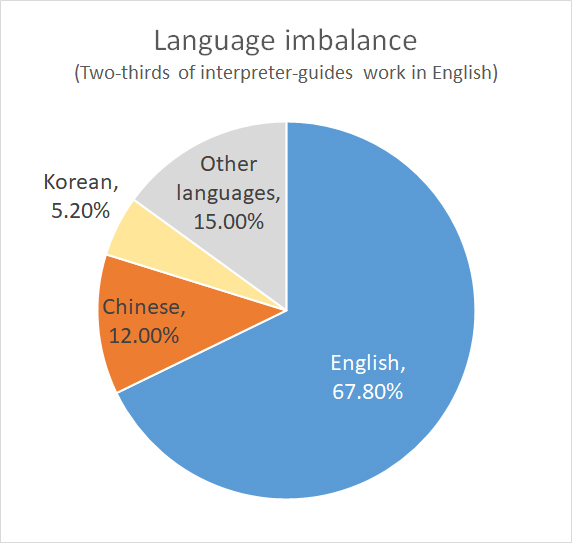 |
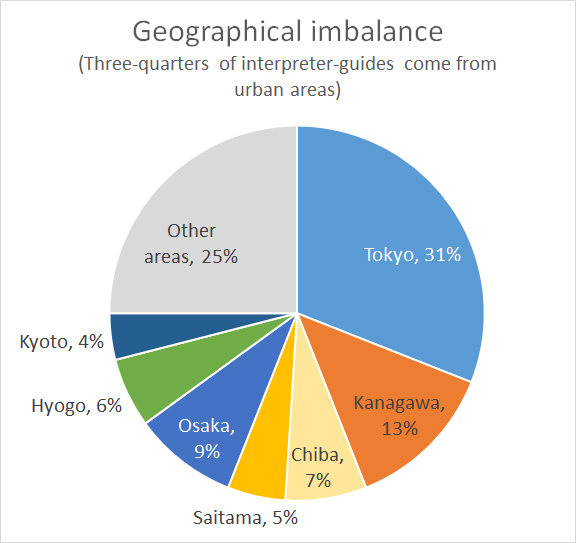 |
| Source: Japan Tourism Agency. Survey of tour guide-interpreter employment conditions (from October to November 2013) | |
Issues for the future
As we have seen, there are various things and objects that impress foreign tourists when they see them, i.e. which can become tourism resources; and we can expect the number to grow. On the other hand, Japan faces many distinct issues.
1) Full provision of Wi-Fi
2) Communication of information and evacuation instructions to foreigners in the event of an earthquake disaster. Although the Tourism Agency has taken measures such as releasing a disaster prevention app for foreigners, issues remains over the communication of information and accurate evacuation instructions in an emergency to foreigners who don’t understand Japanese. Short-term foreign visitors to Japan don’t have opportunities either to listen to explanations or take part in evacuation training.
3) The promotion of Japan to children and younger generations. Japan is expensive and geographically distant for people in countries outside Asia, Japan is. But if someone gets a positive impression of Japan when they are young, however, we can expect Japan to feature in their future life plans. We’d like them to aspire to learn Japanese, or one day come to Japan to study, etc.
4) Assuring a sufficient number of tour guide-interpreters (correcting language and geographical imbalances). Although there are more than 19,000 registered tour guide-interpreters across Japan, there are significant imbalances in their working languages, and where they guide and live. Although there are 10 registered languages, almost 70% of guides use English, while Portuguese and Thai are only spoken by less than 1% of tour guide-interpreters: a huge gap. Meanwhile, guides are concentrated in the urban areas around Tokyo and Kyoto and Osaka (see figure 1).
Because of this, when cruise ships dock in regional ports there is a temporary shortage of tour guide-interpreters for sightseeing tours. It is then expensive because guides speaking less common languages have to travel from all over Japan for each ICT (Inclusive Conducted Tour. An inclusive tour with tour conductor). That is then reflected in the customer’s vacation costs.
Things that foreigners want to do on their next trip to Japan
What do visitors to Japan from abroad who might come again want to do on their next trip? The JNTO created a survey based on the Japan Tourism Agency’s 2015 survey into consumption trends by foreign visitors to Japan. By looking at the difference between “Things that tourists from overseas planning to visit Japan hope to do)” and “Things that tourists from overseas hope to do on their next visit to Japan” we can answer that question. These are the main things tourists are even more keen to do should they visit Japan again (all countries).
– Bathe at a hot spring (Before their visit 34.6%, and after their visit 45.2%; an increase of 10.6%)
– Viewing stage performances (Before their visit 4.2%, and after their visit 12.7%; an increase of 8.5%)
– Viewing sports (Before their visit 2.7%, and after their visit 9.8%; an increase of 7.1%)
Tour guide-interpreters working on the ground will understand these results. On their first visit to Japan, tourists tend to only visit the standard sightseeing spots. Before they come they might not be particularly interested in a typical Japanese pleasure such as bathing at an onsen. But once they have experienced and enjoyed it, many want to do it again the next time. Even if people want to see sumo, some visit at a time when there are no sumo tournaments. Likewise, they might not have a chance to leisurely watch kabuki and other performances, so they probably hope to do that the next visit. (See figure 2 and 3).
Conclusion
Sometimes the things that pass unnoticed by Japanese people every day can be tourism resources, and once people visit Japan, they discover tourism resources that impress them and which they hope to experience on future trips. The Japan Tourism Agency’s marketing slogan is Japan, Endless Discovery. In line with that, we should work together to provide an environment in Japan suitable for foreign visitors, and develop new tourism resources that will continue to excite and impress.
Translated from “Tokushu 1 Ibunka-sesshoku toshiteno Inbaundo: Naniga Honichi-gaikokujin ni ‘Kando’ wo ataeruka ― Gaikokujin ryokosha ni nihon no bunka, shakai wo tstaerukoto (Special Feature 1 Inbound Tourism and Experiencing a Different Culture: What Impresses Foreign Tourists When They Come to Japan? ― Explaining Japanese society and culture to foreign tourists),” THE TOSHI MONDAI (Municipal Problems), January 2017, pp. 43–51. (Courtesy of The Tokyo Institute for Municipal Research) [January 2017]
